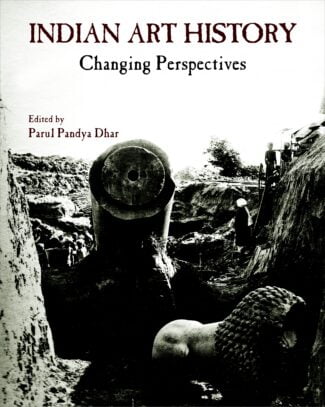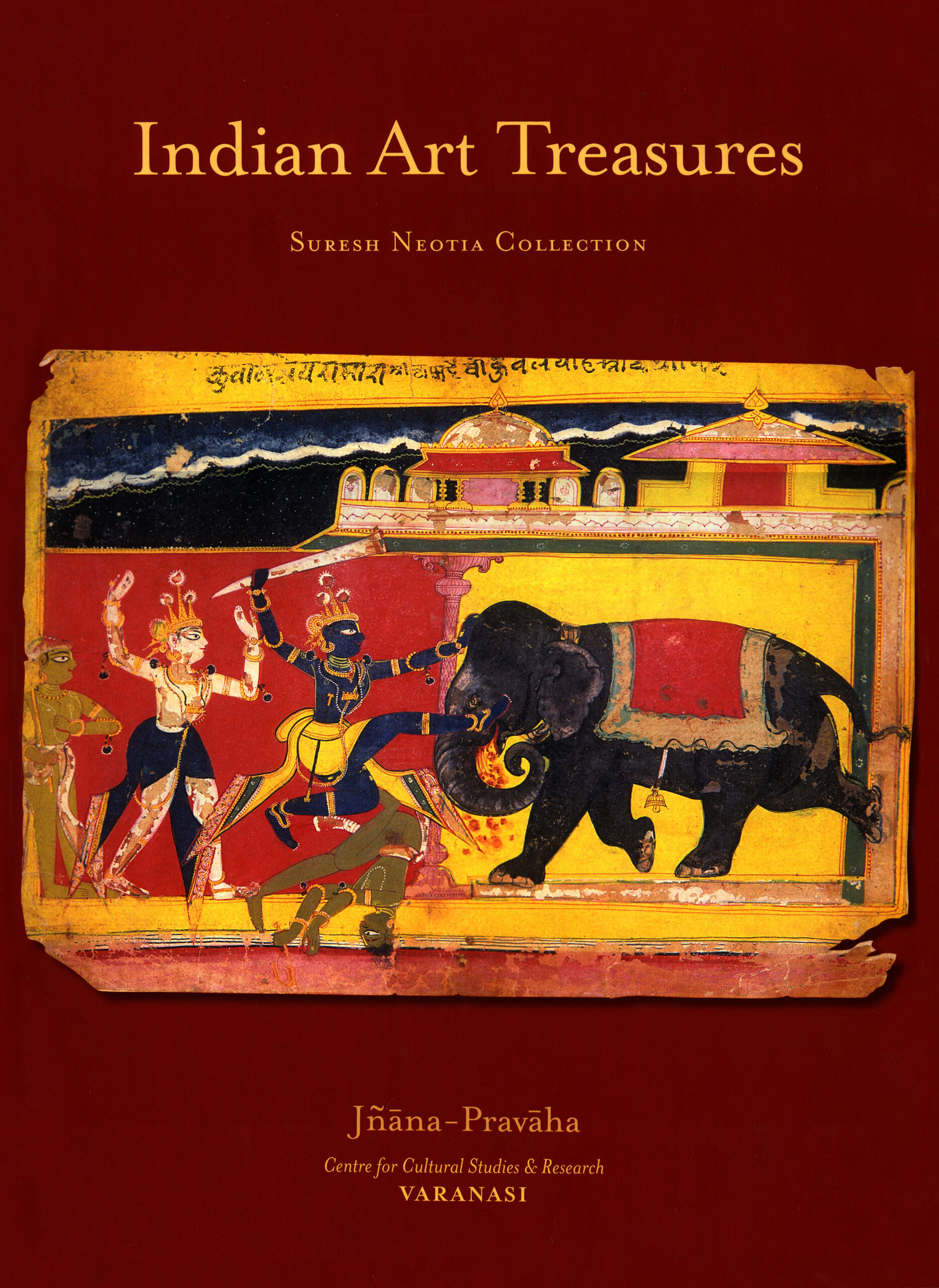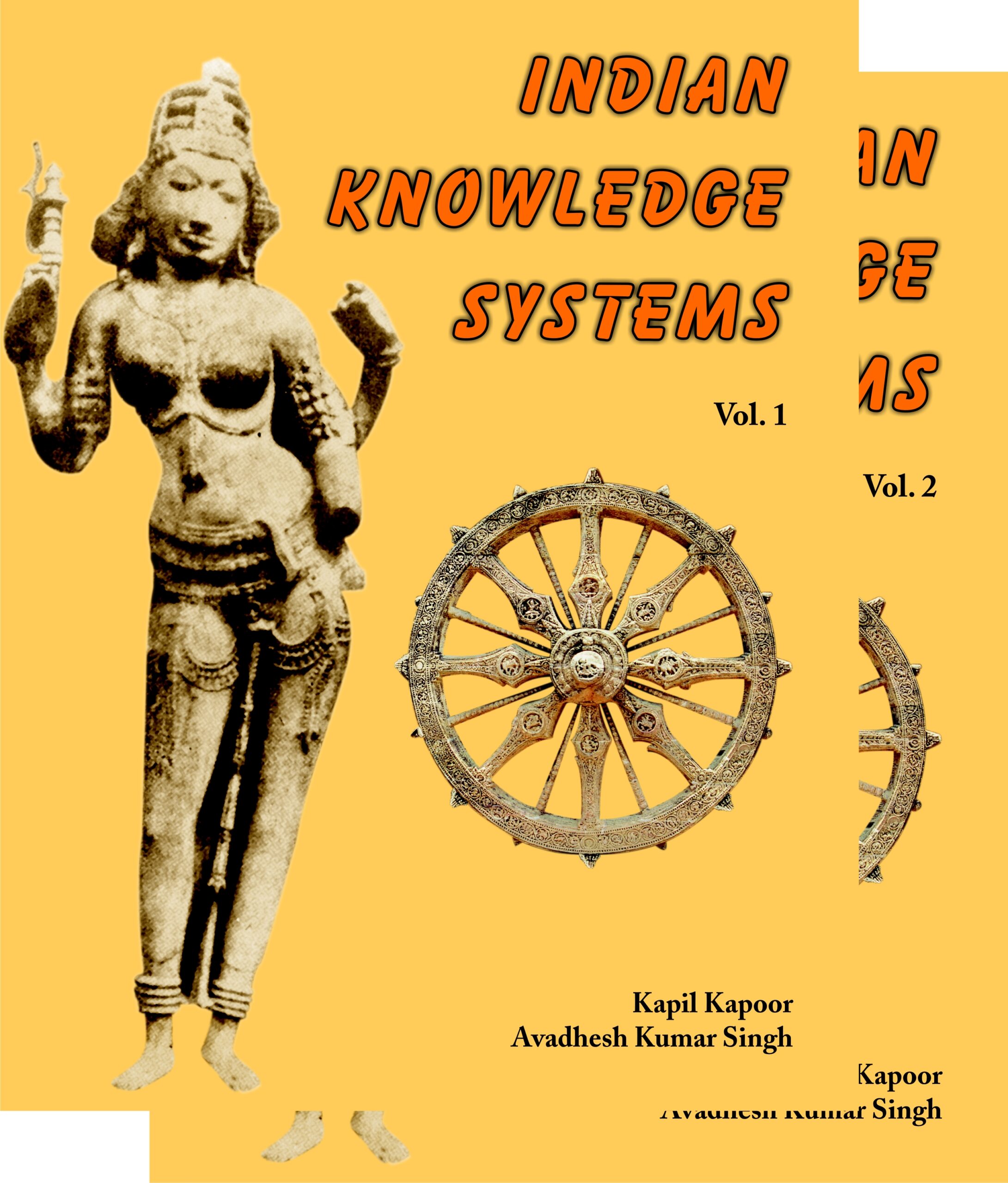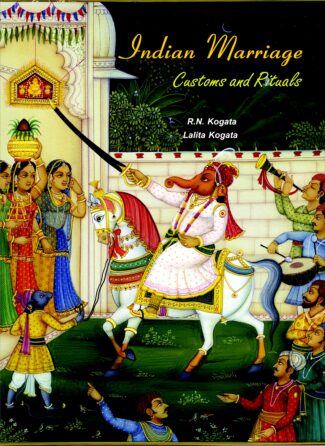Showing 121–130 of 384 results

The key art historical concerns addressed in this volume include studies in form, style, textual interpretations, iconography, symbolism, representation, connoisseurship, artists, patrons, gendered readings, and the inter-relationships of art history with archaeology, visual archives, and history, in the Indian context.
The shaping of the disciplinary practice of art history in the Indian context has been a fascinating process and brings to the fore a range of viewpoints, issues, debates, and methods. Changing perspectives and approaches in academic writings on the visual arts of ancient and medieval India form the focus of this collection of insightful essays.
A critical introduction to the historiography of Indian art sets the stage for and contextualizes the different scholarly contributions on the circumstances, individuals, initiatives, and methods that have determined the course of Indian art history from colonial times to the present. The spectrum of key art historical concerns addressed in this volume include studies in form, style, textual interpretations, iconography, symbolism, representation, connoisseurship, artists, patrons, gendered readings, and the inter-relationships of art history with archaeology, visual archives, and history.
Based on the papers presented at a Seminar, Historiography of Indian Art: Emergent Methodological Concerns, organized by the National Museum Institute, New Delhi, this book is enriched by the contributions of some scholars who have played a seminal role in establishing art historys disciplinary orientations in the Indian context, and by those who offer more recent perspectives on the subject. Lucid and informative, this is an indispensable resource for all those engaged with the history and historiography of ancient and medieval Indian art in universities and museums across the globe, and will also be of interest to the general reader.

The book describes the priceless art objects collected and displayed at the Kalamandapa (the Museum) at Jnana-Pravaha, Varanasi. These objects include Indian miniature paintings, Tangkhas from Tibet and Nepal, stone sculptures and terracottas. Some of these objects have been presented for view in major national and international expositions.
Jnana-Pravaha, the Centre for Cultural Studies & Research at Varanasi represents the vision of its founders, Bimla Poddar and Suresh Neotia. It aims to serve and promote the cause of culture by rediscovering and highlighting its universal elements those that transcend all barriers. Jnana-Pravaha presents varied and scintillating forms of the visual and performing arts, and endeavours to create an awareness about the countrys cultural ethos and ethnic conventions. It is devoted to reviving and preserving old and obscure scripts which, while of immense significance for the reconstruction of the cultural history of the subcontinent, have been neglected to the point of being extinct. Through its educational and research programmes and publications, Jnana-Pravaha is engaged in the dissemination of our tangible and intangible heritage. All this is being accomplished with quiet zeal in a serene yet pleasing ambience. Situated on the left bank of the holy stream of Uttaravahini Ganga, Jnana-Pravaha faces the historical fort of Ramnagar on the other side of the river. While a well-equipped reference library on Indian culture, art, history, philosophy, literature and allied subjects caters to the needs of students and researchers, iterature and allied subjects caters to the needs of students and researchers, Kalamandapa (the Museum) presents a treasure trove of art dating from the pre-Mauryan age to the 20th century. The survey and documentation of local sites and antiquarian remains is emerging as an added attraction to art historians. Seminars, symposia and workshops on different themes form regular features of the Centres activities. In-depth studies of specific subjects are a hallmark of Jnana-Pravaha. Similarly, conducting special courses in early scripts like Brahmi and Kharoshti affirms the conviction of the Centre of the need to revitalise archaeological source material. An independent research project for deciphering and studying epigraphs and records has been launched with the appointment of Senior and Associate Fellows. Staging of Sanskrit plays is another Jnana-Pravaha annual event. The Vedas are the fountain of knowledge and are accepted as the earliest books of the world. To preserve their oriental style of learning and recitation, Jnana-Pravaha has established a city unit known as the Samskara & Anushthana Kendra. The emphasis is on the conventional and correct pronunciation of Vedic hymns. Young students undergo rigorous training in the Gurukula style under the close supervision of the Acaryas.
Can Indian civilization be compared to a “thousand-branched tree”? What have been its outstanding achievements and its impact on the world?
These are some of the questions this book asks. But it also deals with issues confronting more and more Indians caught in an identity crisis: What does it mean to be Indian? What is specific to the worldview developed by Indian culture? How has it dialogued with other cultures? Is it built on durable foundations, or is it little more than colourful religiosity and quaint but outdated customs? And what are the meaning and application of secularism and tolerance in the Indian context?
The French-born author, who has been living in India for 33 years, argues that Indian culture is not some exotic relic of the past, but a dynamic force that still has a role to play in defining India’s identity and cohesion, and in proposing solutions to today’s global challenges.
Written in a crisp and engaging style, this thought-provoking volume challenges received ideas on India’s culture and invites us to think afresh.
Can Indian civilization be compared to a “thousand-branched tree”? What have been its outstanding achievements and its impact on the world?
These are some of the questions this book asks. But it also deals with issues confronting more and more Indians caught in an identity crisis: What does it mean to be Indian? What is specific to the worldview developed by Indian culture? How has it dialogued with other cultures? Is it built on durable foundations, or is it little more than colourful religiosity and quaint but outdated customs? And what are the meaning and application of secularism and tolerance in the Indian context?
The French-born author, who has been living in India for 33 years, argues that Indian culture is not some exotic relic of the past, but a dynamic force that still has a role to play in defining India’s identity and cohesion, and in proposing solutions to today’s global challenges.
Written in a crisp and engaging style, this thought-provoking volume challenges received ideas on India’s culture and invites us to think afresh.

India has continuous and cumulative intellectual traditions and thisbook endeavours to expound the major Indian Knowledge Systems, under its seven sections and makes available authoritative statements that articulate their validity for the contemporary Indian and Western reality in the modern perspective.
India has continuous and cumulative intellectual traditions in many domains of knowledge. This tradition has its beginning in the Rigveda, the first attested Indo-European document, and continues to be alive in the life, practices and learning of the Indian people. The power and pertinence of knowledge systems in this tradition are attested by the existence of innumerable texts and thinkers that continue to be the subject of study in major contemporary universities round the world. Not many today are aware of this rich heritage of thought. The Academy therefore produces rootless young minds that at best are ignorant and at worst have contempt for their own traditions of thought. The two volumes, comprising 34 articles by distinguished scholars, expound some major Indian knowledge systems viz. Logic, Philosophy of Language, Technology and Crafts, Polity and Governance, Ethics and Sociological texts, Architecture, Poetics and Aesthetics, Law and Justice, Mathematics and Astronomy, Agriculture, Trade and Commerce and Medicine and Life Science. Under its seven sections (i) Indian Knowledge Systems (Ex)Positions; (ii) Science; (iii) Medical Science in India; (iv) Psychology, Polity and Sociological Texts; (v) Aesthetics and Poetics; (vi) Philosophy, Logic and Language; and (vii) Knowledge Formation, Dissemination and Practice it makes available the first statements that articulate their validity for the contemporary Indian and Western reality.

Marriage or Vivaah, particularly in India, is a sacred ceremony comprising various customs Þ religious and social Þ and Vedic rituals. These are meant to propitiate the gods for obtaining their blessings for the bride and the bridegroom, and to honour and entertain those who participate in the celebrations. This book explains in detail, all the important rituals which form part of the marriage.
Marriage is considered a very significant ritual for giving societys sanction to a close relationship between a man and a woman as husband and wife. It is, therefore, also called a social system. The marriage ceremony is a combination of many rituals, based on information contained in Hindu scriptures. It also represents and reflects the social customs and practices that are prevalent in the society. The rituals vary depending upon the community, the religion and the state where they are performed. The marriage customs, rites and rituals among royal families are mentioned in this book most of these rituals are followed by common people as well and are performed in the original or altered forms in the Indian society. Mr R.N. Kogata and Mrs Lalita Kogata did a lot of research and consulted several authorities and have written in detail about the various rituals involved in a human beings life from birth to death. Different scholars have mentioned different numbers of rituals and sacraments 25, 40 or 48. But Maharishi Veda Vyasa has described 16 rituals as important. Out of these, the Vivaah (marriage) samskaar itself encompasses various rituals the main ones covered in this book are: the Bindaulee (wedding procession); Hathalevaa (hand-taking ceremony or paanigrahan), Phere (agni pradakshinaa, circumambulation of fire); Kanyaadaan (giving away daughter in marriage); Maangbharaaye (filling vermilion); Mangalsutra (tying the wedding thread); Saptapadee (walking seven steps together); and Vadhu kee Vidaaee (brides departure to her in-laws house). This book should be in all households in order that all will know the meanings of the various rituals in a marriage particularly in the present days when learned pandits who can explain the rituals, are few, and people have no time or inclination to go through voluminous scriptures or texts on the subject of marriage.

The book presents a comprehensive account of the six Indian classical systems and the Carvakas, and of their texts and their exponents. Unfolding a panorama of the Hindu divinities, it also discusses Jainism and Buddhism as religions and philosophies.
In India, philosophy and religion are linked intimately, inseparably. Barring the Carvakas materialistic school, every other school has concentrated not just on the spiritual way of life in the here-and-now, but on the eventual spiritual salvation of man in relation to the universe. However, notwithstanding the centrality of its spiritual concerns, Indian philosophy has not altogether glossed over materialism; rather it has known it, overcome it, and has accepted idealism as the only tenable view -whatever specific form that idealism might take: mythological, popular or technical. Offering a brilliant prefatory discussion on the nature and thematic importance of the Vedas, the Upanishads, and the Bhagavad Gita, Padhis book tries to capture Indias fabulous philosophic genius, with comprehensive, at once objective account of all the six classical systems: the Nyaya, the Vaisheshika, the Samkhya, the Yoga, the Purva Mimamsa, and the Vedanta; and, in addition, of the Carvakas: the crass materialists. And of their numerous texts and their exponents: classical, medieval, and modern. Also unfolding a panorama of the Hindu pantheonic divinities, the authors present Jainism and Buddhism: both as religions and philosophies -with focus on their world- views of ethics, major doctrines and significant metaphysical theories, among other aspects. Uninfluenced either by the idealistic/eulogistic studies of certain Indian scholars, or by the damaging critiques of their Western counterparts, the authors aim to achieve utmost objectivity in their presentation. Which, together with extensive bibliographic references and glossary of Sanskrit terms, makes the book an authentic guide for the discerning readers of Indian philosophy, religion and mythology.

This book extensively treats the subject of Indian temple jalas or grilles with an in-depth discussion basd on Vastusastra, for the first time with the aid of line drawings and illustrations. It brings within its purview Islamic screen and Gothic traceries also, for comparing and contrasting.
The present monograph is unique in that it, for the first time, extensively treats the subject of Indian temple jalas or grilles together with an in depth discussion in the light of relevant medieval vastusastra passages in Sanskrit on Indian architecture. Besides identification, classifica-tion, and description of the different grille types as well as their forms, features, and ornamentation, it investigates their purpose and their relationship with the environment as well as their functional engagement with the building of which each example is an integral part. It likewise traces the origins or at least the earliest incidences together with the development, wherever discernible, of the Indian grilles. While maintaining the thrust of writing towards the ancient and medieval Indian grilles, it brings within its purview the Islamic screens and the Gothic traceries for comparing and contrasting their characteristics with the earlier Indian. In the process, it also dwells on the factors of concept, form, function and, above all, aesthetics. The visual appearance of the jalas developed in each of these three architectural systems considerably varies due to environmental, creedal, cultural, and hence stylistic differences. The text of the monograph is elucidated by carefully drawn 55 line drawings and 348 photo illustrations. Being scholarly and, as a result, of academic disposition, it will not have the privilege of the company and prestige of coffee table books. It likewise cannot be a companion book for the icono-graphers who in India dominate the field of ancient art and pass as art historians, nor is it useful to the modernists and lovers exclusively of contemporary arts and literature. What is more, in orientation, treatment of theme, and the tenor of discussion, it adheres to the methodology of art history proper and, by the same token, not that of neo-art interpretatory, a different and new discipline which their protagonists, the Newtrendians in the West and because of them the Newtrendianoids in India, claim and proclaim as New art history, just as they look down at the other/original one by qualifying it as conventional, traditional, old-fashioned, and outmoded. They are largely unconcerned about history and chronology, socio-religious and cultural background, and ignore style, inherent concepts, philosophy, metaphysics, and aesthetics.

The thought-provoking articles contained in this volume present insights into the Hindu religious vision for nourishing mutual appreciation and respect among the various religious traditions. They also make up a presentation of Vedic and Upaniùadic ideas of understanding and ahi§sà to address some of the most urgent global problems of today.
The conference papers make up a presentation of Vedic and Upanishadic ideas of understanding and ahimsa to address some of the most urgent global problems in todays world. The scholarly articles elaborate on principles of ahimsa as practised by the Buddhist and Jain traditions and by the Indian leader, Mahatma Gandhi. Scholars from India and other parts of Asia as well as the West here explore the scientific and systematic nature of life of the Vedic people. They examine aspects relating to linguistics, the Indian epic literature, and advaita, and study many individual topics like states of consciousness in Indian philosophy and concept of time in Indian heritage. They delve into the meaning and message of the Upaniùads as extremely relevant to us in the present century. A study examines festivals to determine the correlation between annual festivals and natural factors and conducts a scientific analysis that establishes a relation between lunar phases and human physiology, and more generally the relation between calendar and culture.
The thought-provoking papers present insights into the vision of Dharmic traditions for nourishing mutual appreciation and respect among religious traditions. They also reveal the abuses and distortions that the tradition has suffered from within over the ages. They call for a scientific analysis of human traditions so that their time-tested values can prove relevant to the present day.

The book deals with evolution of Mughal architecture (ad 1526 to 1658) and explains the distinct characteristics of Mughal art the use of architectural material by the Mughals, their roofing techniques, their dome and the special features of the Mughal jharokha. Prof. Nath delves into the concepts and customs the Mughal architecture involved, discussing examples of monuments in detail.
It deals, extremely briefly, with the evolutionary process of Mughal Architecture, practically from Babur to Shah Jehan (1526 to 1658 ad). Instead of being an exotic phenomenon, as it is largely misunderstood, Mughal Architecture, like the Gupta art, was deeply rooted in the soil and it grew and developed not only on indigenous forms and techniques, but also on its concepts, customs and beliefs. It was owing to the decisive participation of native sources, in its development, that such a wonderful monument as the Taj Mahal could be built in India, and nowhere else. The Land, the People and the Culture have made it what it is, which is why it is so diametrically different from any other art of Islam. Written in a simple language, without the research jargon, and adequately illustrated, the book gives an authoritative appraisal of the subject with landmark examples.
| There are no products |